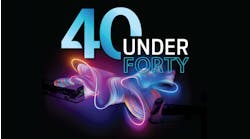Kevin Desmond, general manager of King County Metro Transit and chair of the American Public Transportation Association (APTA) Sustainability committee led a roundtable discussion Tuesday at the closing of APTA's Sustainability and Public Transportation Workshop. Several panelists shared some closing thoughts on what value sustainability has and how we should be viewing the value of sustainability.
Using Technology to be Sustainable
How can the pillars of sustainability be succeeded by a city using technology? Cisco Systems Inc.'s Director - Urban Innovation Gordon Feller shared some insight on designing systems that are more sustainable and what we might expect for the future.
Cisco Systems Inc. has projects at Bay Area Rapid Transit and the MTA in New York and he said the way technology can be better utilized, often with existing systems, can lead to an improved passenger experience, new revenue sources, enhanced safety and security possibilities and more operational efficiencies.
"The architecture is not rocket science," Feller said. "It's kind of obvious." And the network that runs all this doesn't have to be owned by the transit properties he said. Those networks, which have been expensive to build, are not being fully utilized. "We want to make sure you're using it in full to get the sustainable benefit."
For the passenger experience, it's well above offering Internet to passengers. They can know the schedule of the next part of their trip and with so many having cell phones with sensors already built in to them, we can know where that person is, or how many people are on that bus at a given time or where that passenger will be three minutes from now.
Regarding security, watching what's going on in that vehicle by video surveillance is just the beginning. Sending information directly from a vehicle to a police car or in-train passenger notification delivered remotely from a single staff person in a control center or having access to a door system remotely are some of the possibilities. He stressed that agencies can use the investment the network already represents.
The current Internet is about to expire because we have used up all of that capacity Feller said. He added that the next Internet is being built and it will have the ability to deliver 10 times the value. "Some places around the world are leap-frogging into the new technology."
Building that Sustainable Community
Helping to build that sustainable community, how you engage the public in a meaningful way in the planning process was discussed by Cynthia Jarrold, Rosa Parks federal policy coordinator, with the Transportation Equity Network. "Organizing at its best is about helping folks become clear about the world they live in, their role and the vision of the future."
Building really strong relationships with decision makers in the community is of primary importance. She says they train folks so they learn how to speak to people and to create strategies to engage other folks in the conversation.
Jarrold shared an example from Missouri that illustrated equity is about access and showed how getting out there to develop those relationships to really make a difference. Through SAFETEA-LU, ½ of 1 percent for highway or bridge projects could be used for on-the-job training for under-represented groups in transportation careers, and they decided "to try this out."
The I-64 project near St. Louis was the largest project in Missouri Department of Transportation's (MoDOT) history and it was their first design-build project.
"Our folks in St. Louis, about 70 congregations, said let's go to MoDOT, let's see if they'll allow us to invoke this act of Congress," she said.
She explained that while her folks began to build relationships with the community, including the decision makers and those that would be impacted by this project, MoDOT brought on a consultant, Julie Cunningham, president/CEO of the Conference of Minority Transportation Officials (COMTO).
As for a return on investment, the project came in under budget, ahead of schedule and the goals set for minority hiring and training were all met or exceeded.
"What we're looking at now is sustainability. How do we apply the lessons learned about organizing and bringing people to the table," Jarrold said.
"We're in an industry that focuses on numbers, but I know and all of us know that the narrative of a community really defines who it is.
"With public engagement, these folks will go out and tell stories about what happened to them during the process. Those stories begin to change the narrative in our communities."
Planning for Sustainability
Clinton Bench, the deputy executive director, Office of Transportation Planning with the Massachusetts Department of Transportation (MassDOT), talked about their sustainable initiatives, including the GreenDOT initiative that was started last year. The three main goals were to reduce greenhouse gas emissions, promote healthy transportation options and to support smart growth development.
Around the same time they started GreenDOT, they were engaging in a strategic planning process and they decided to not do it the traditional way with public hearings and meetings. "We wanted to find out the problems of the local transportation networks," Bench said.
Meetings were set up in a dialogue format to find out how they used the transportation network and what they found was, instead of people wanting or opposing specific capital projects, people were excited to tell them what was important to them: to see the bus coming on time, to have bus service in the smaller cities after 6 p.m., or to have service every 15 minutes instead of every 30 minutes.
Bench confirmed, "People wanted sustainability-type of improvements."
He said they've been able to connect with what people want and the MPOs to identify capital projects that needed to be done and ensuring those were consistent with the sustainability principles and the GreenDOT initiative.
A Real Value to Sustainability
Looking at sustainability from a real estate perspective was Daniel Rosenfeld, senior deputy for economic development, Office of Mark Ridley-Thomas, Supervisor, Second District, County of Los Angeles.
"We see transit as the first step of a three step process," he said.
1. The train
2. Infrastructure, including private and public, libraries, parks, retail around stations, etc.
3. Social infrastuructre – an identity of neighborhood
Rosenfeld said, "Transit is the last best hope of resurrecting these neighborhoods." They look at the value of sustainability in hard nose bottom line economic terms. "There's a nod to the environmental and social objectives, then they want to know what it's worth," he said of the private investors.
An investment in sustainability is advantageous for a number of reasons.
1. Market demand — Tenants are asking for it
2. Marketing advantage — It helps with marketing when you talk about your buildings being green
3. Lower capital cost — One specific area he talked about was how parking can be reduced and how much money that has saved some properties
4. Lower operating cost — Green initiatives are known for the savings in utilities
5. Availability of supplies is becoming an increasing issue — Such as water, energy
6. Higher value — There is some empirical evidence to support this, that buildings around transit trade higher.
7. Less volatility — As we've seen, when the market dropped, the property situated near transit lost less value
8. Public leadership — Investment in new technologies and sustainability is a way of promoting leadership and growth
How Can We Measure Sustainability?
Transit Authority of River City (TARC) Executive Director J. Barry Barker addressed the dilemma of how we need to look at measuring sustainability, the sustainability of a community. He referenced APTA's recent Telling Our Story initiative and said we need to focus more at the individuals that ride the system: why do they ride, what are their benefits.
Barker shared a couple of experiences he's had that illustrate some of these hard-to-measure values of public transit. First was about a conversation he had with a friend of his that has a kid with a cognitive disability. The friend told Barker that over the last five years, his kid has been able to hold a job and hasn't been late to work once in those five years thanks to TARC paratransit. "The cost shows up on the ledger, but the benefits don't," Barker stated and asked, what's the value of that kind of impact?
The second story was about a partnership TARC had several years ago with a local urban league that had an educational program that ran after school and then carried into summer. The ID for this program also served as a transit pass; the kids could get to and from the program and they could use TARC to get around town.
At the end of the program, Barker said there was a graduation ceremony and each of the partners with this program were called up on stage and then given a Louisville Slugger bat along with recognition. When Barker from TARC was called up on stage, "The kids went crazy ... it was the first time I felt like a rock star.
"It wasn't about me; we had given them freedom. We had given them mobility."


